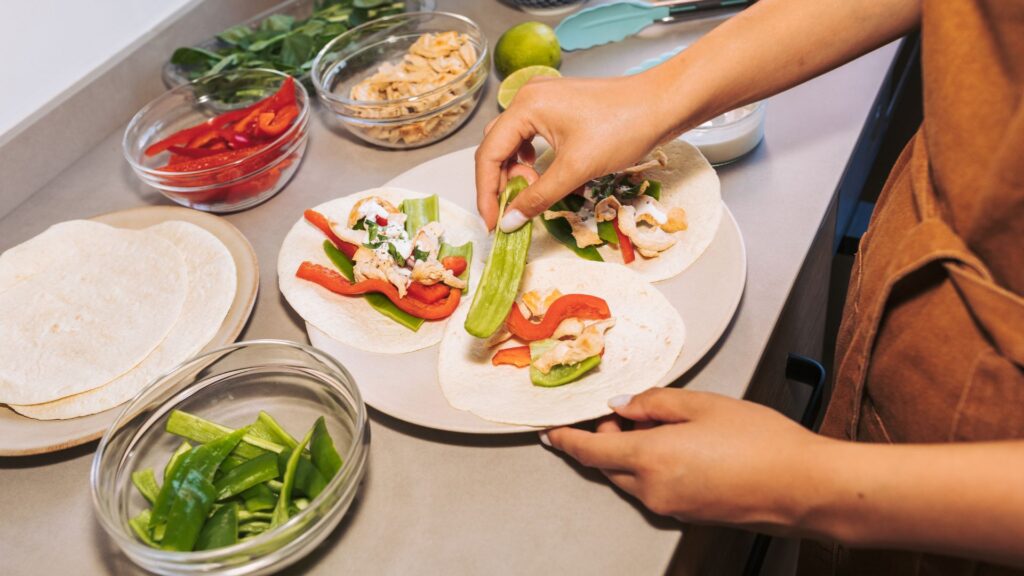Managing your finances effectively is essential for achieving financial security and long-term goals. However, saving money consistently each month can feel challenging without a structured plan.
Budgeting isn’t just about restricting spending; it’s about making conscious choices that maximize your resources and minimize waste. By implementing practical, proven strategies, you can take control of your finances and build a strong foundation for the future.
Below, we explore 10 smart budgeting hacks designed to help you save more money every month and reach your financial aspirations.
Also read: How to Start Investing with Just $100: A Practical Guide
10 Smart Budgeting Hacks to Save More Money

Mastering the art of budgeting can make a significant difference in your financial health. By adopting these 10 detailed strategies, you can save more money every month and achieve your financial goals faster.
1. Create a Detailed Monthly Budget
A well-organized budget is the cornerstone of financial success. Begin by recording all your income sources and categorizing your expenses into fixed (rent, utilities, loan payments) and variable (groceries, entertainment, dining out). Utilize budgeting apps such as Mint or YNAB to track every dollar spent.
Once you have a clear picture of your financial inflows and outflows, set realistic spending limits for each category. Highlight areas where you can cut back.
For example, reducing dining out or switching to energy-efficient appliances can lower costs. Regularly reviewing your budget ensures that it adapts to changes in your income or lifestyle.
2. Automate Your Savings
Pay yourself first by setting up an automatic transfer to your savings account every payday. This method removes the temptation to spend the money before saving it. Even small, consistent contributions grow over time, thanks to compound interest.
For instance, if you transfer $200 monthly into a savings account earning 3% interest, you’ll have over $2,400 by year’s end, excluding interest.
Increase the amount whenever possible, such as after a raise or when you eliminate a debt payment. Automation simplifies saving and makes it a non-negotiable part of your routine.
3. Embrace the 50/30/20 Rule
The 50/30/20 rule provides a balanced approach to money management:
- 50% of your income should go toward necessities such as rent, utilities, transportation, and groceries.
- 30% is allocated for discretionary spending, including hobbies, dining out, and entertainment.
- 20% is set aside for financial priorities, such as savings, debt repayment, or investing.
This formula ensures that you cover essentials, enjoy some flexibility, and make consistent progress toward financial goals.
To implement it effectively, divide your paycheck as soon as you receive it. Use separate bank accounts if needed to avoid mixing funds.
4. Cut Unnecessary Subscriptions
Recurring subscriptions can silently drain your finances. Conduct an audit of all your subscriptions, from streaming services and gym memberships to software tools and magazines. Ask yourself if you truly use each one.
Cancel underutilized subscriptions, switch to free alternatives, or share accounts with trusted friends or family members for services like Netflix or Spotify.
For gym memberships, consider exercising outdoors or at home using free workout videos. Even saving $20 per subscription adds up significantly over a year.
5. Meal Prep and Cook at Home

Food expenses often consume a large chunk of monthly budgets. To reduce costs, plan meals for the week and buy groceries in bulk from cost-effective stores like Costco or Aldi.
Cooking at home is cheaper than eating out and allows you to control portions and ingredients.
Prepare meals in batches and store them in the freezer to save time and avoid waste. For example, cook a large pot of soup or stew that can be reheated throughout the week. You’ll save hundreds of dollars monthly and develop healthier eating habits.
6. Use Cash-Back and Discount Apps
Take advantage of modern tools to save on everyday purchases. Cash-back apps like Rakuten or Ibotta reward you with a percentage of your spending when you shop through their platforms.
Use discount apps or browser extensions such as Honey to find coupons and deals automatically.
Combine these tools with rewards credit cards that offer points or cash back for purchases. For instance, use a grocery store app to clip digital coupons, earn rewards, and stack those with cash-back app earnings. Over time, these savings add up to a substantial amount.
7. Set Clear Financial Goals
Define specific financial goals, whether short-term (saving for a holiday) or long-term (retirement). Goals provide motivation and a clear path for your budgeting efforts. Write them down and break them into actionable steps.
For instance, if your goal is to save $10,000 in two years, calculate how much you need to save monthly and find ways to adjust your spending.
Use tools like vision boards or financial apps to track progress. Celebrate small wins, such as reaching the first $1,000 milestone, to stay motivated.
8. Practice the 24-Hour Rule for Purchases
Impulse purchases often derail budgets. To counter this, implement the 24-hour rule: wait a full day before buying non-essential items. This pause gives you time to reflect on whether the purchase aligns with your needs and priorities.
For example, if you’re tempted by a sale on shoes, wait 24 hours. During this time, consider if you already own something similar or if the item will genuinely add value to your life. Often, the urge to buy fades, saving you money.
9. Buy Secondhand or Shop Sales
For items like clothing, electronics, and furniture, explore secondhand options or wait for discounts. Thrift stores, online marketplaces like eBay or Facebook Marketplace, and garage sales offer great deals on gently used items.
When buying new, plan your purchases around sales events like Black Friday, end-of-season clearances, or store anniversaries.
Use price-tracking tools like CamelCamelCamel to monitor online prices and get the best deal. Shopping smarter can help you save significantly without sacrificing quality.
10. Review and Adjust Regularly

Your financial circumstances and priorities will change over time, and so should your budget. Review your spending and savings habits at least once a month. Identify patterns, such as overspending on dining out, and adjust your limits accordingly.
Use this time to assess your progress toward goals and recalibrate if necessary. For instance, if you receive a raise, increase your savings percentage.
Alternatively, if unexpected expenses arise, like medical bills, temporarily redirect funds from discretionary categories. Regular adjustments keep you on track and adaptable.
By adopting these detailed budgeting hacks, you’ll build healthier financial habits, achieve your savings goals, and create a more secure future.
Conclusion
Effective budgeting is more than just a financial exercise—it’s a commitment to improving your quality of life and securing your future. By incorporating these 10 smart budgeting hacks into your routine, you can take control of your money, reduce financial stress, and consistently work toward your goals.
Whether it’s automating savings, cutting unnecessary expenses, or embracing mindful spending, each step you take brings you closer to greater financial freedom. Start small, stay consistent, and watch as these strategies transform your financial habits and outcomes.
FAQs: Smart Budgeting Hacks to Save More Money
1. What is the best way to start budgeting?
The best way to start budgeting is by creating a detailed monthly budget. Begin by listing all your income sources and expenses, categorizing them into fixed and variable costs. Use a budgeting app or spreadsheet to track your finances and identify areas to cut back.
2. How can I save money without drastically changing my lifestyle?
Small changes, such as automating your savings, cooking at home, and using cash-back apps, can help you save money without significant lifestyle changes. Additionally, implementing the 24-hour rule for purchases can reduce impulsive spending.
3. Why is automating savings important?
Automating savings ensures that you consistently set aside money before you have a chance to spend it. It eliminates the temptation to skip saving and builds a habit of prioritizing your financial goals.
4. What is the 50/30/20 rule?
The 50/30/20 rule is a budgeting framework where 50% of your income goes to necessities, 30% to discretionary spending, and 20% to savings and debt repayment. It’s an easy and effective way to balance spending and saving.
5. How often should I review my budget?
You should review your budget at least once a month. Regular reviews help you track progress, adjust for changes in income or expenses, and stay aligned with your financial goals.

